5 Types of Garden Trowels: Uses, Pros & Cons (With Pictures)
-
Ed Malaker
- Last updated:
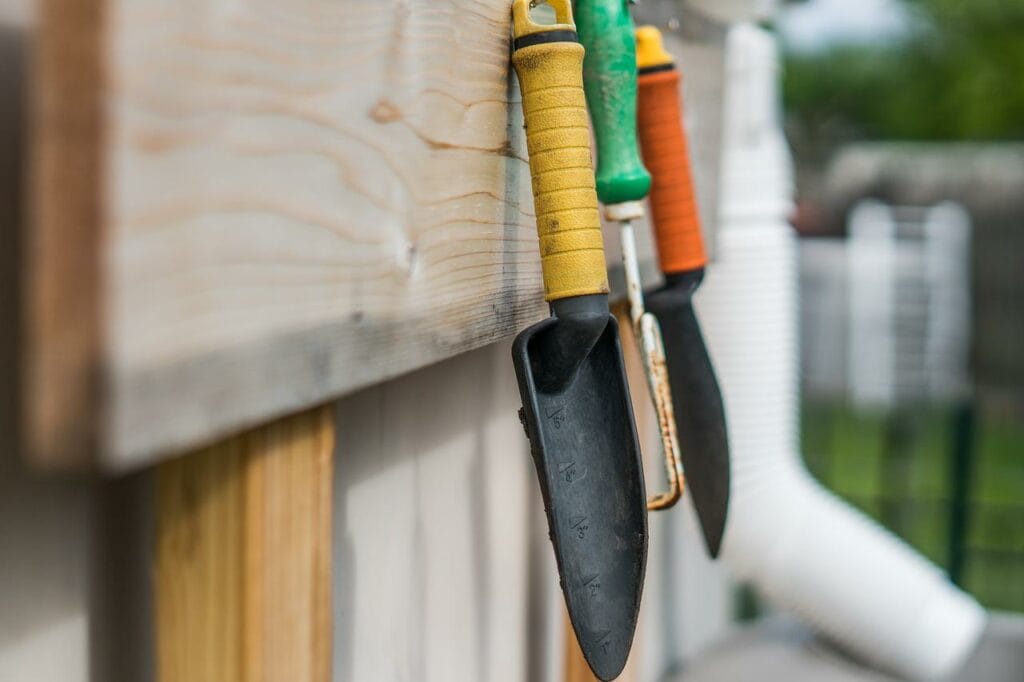
If you are a new gardener, you likely know that there are many tools that you will need to purchase, depending on the job that you are trying to complete, and the trowel is one of them. However, a trip to the store will show that several different kinds are available, and knowing which one to choose can be challenging. If this sounds like your situation, keep reading as we provide you with a list of all the different kinds and explain what they are used for.
The 5 Types of Garden Trowels
1. Dixter Trowel
| Uses: | Planting, weeding |
A Dixter trowel is a long and narrow tool with a blunt end. Gardeners typically use it to remove weeds between closely placed plants, and it’s also handy for removing seedlings from starting trays or separating them when it’s time to transplant.
2. Potting Trowel
| Uses: | Planting, weeding, moving, smoothing |
A potting trowel looks like most other trowels but has high sides, which helps it scoop and move soil. It’s a versatile tool that you can use for potting, transplanting, moving, and even smoothing soil.
3. Traditional Trowel
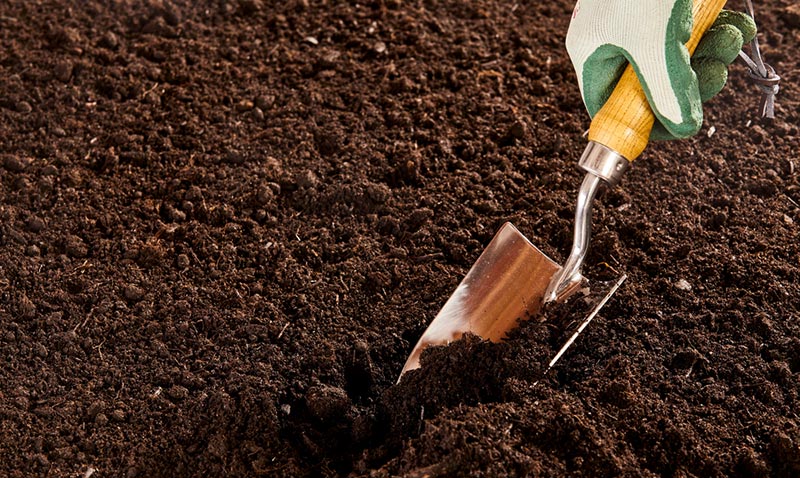
| Uses: | Digging holes, breaking up soil |
The traditional trowel is one of the easiest to find because it’s one of the most common types and has many uses. In the garden, you will primarily use it to dig holes and break up hard soil so you can plant.
4. Transplanting Trowel
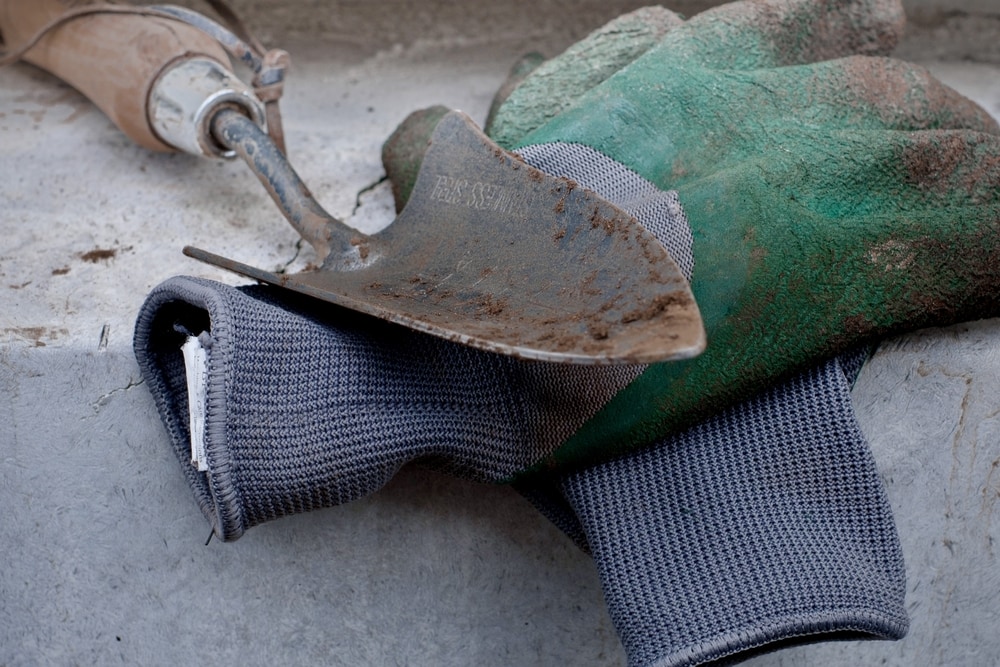
| Uses: | Digging, transplanting |
A transplanting trowel has a long, narrow blade that makes it good for digging holes or transplanting. It’s also a great choice for weeding, making it one of the more useful tools on this list.
5. Weeding Trowel
| Uses: | Digging holes, weeding |
A weeding trowel has a long, sharp blade that makes it easy to remove weeds, even in small spaces. Since it is long, it’s good at getting down into the roots to eliminate them permanently, and it’s also a good tool for breaking up soil and digging holes.
Trowel Blade Materials
Stainless Steel
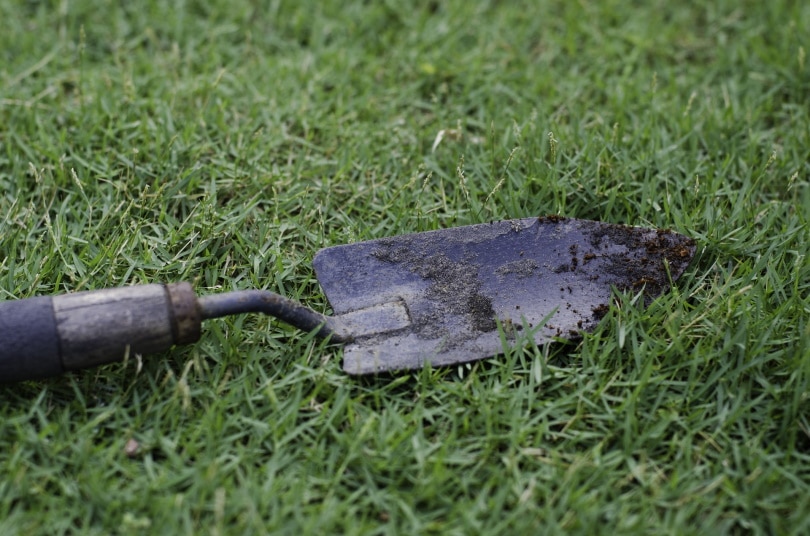
Stainless steel trowels are extremely durable and can withstand plenty of abuse. You can use them with rocky and compressed soil without damaging them, and they are rust-resistant. The downside is that they are quite heavy and are often expensive.
- Durable
- Works with any soil
- Expensive
- Heavy
Carbon Steel

Carbon steel is stronger than stainless steel and is a good choice when working with rocky soil. However, these blades are heavy and prone to rusting, so they are not as versatile.
- Hard and durable
- Good for working with rocky soil
- Heavy
- Prone to rust
Aluminum

Aluminum is rust-resistant and lightweight, making an aluminum trowel easier to use than many stainless-steel trowels. Its light weight makes it possible to spend more time in the garden, especially when working with muddy soil, but it’s not as durable. The rocky ground can damage it or make it too difficult to work with.
- Lightweight
- Rust resistant
- Not that durable
Fiberglass
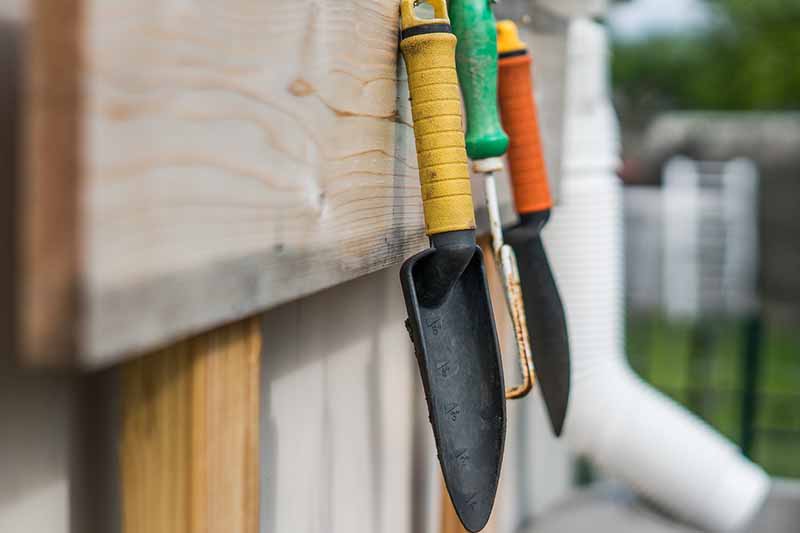
Fiberglass is a good substitute for aluminum and may even be more durable and less expensive. It will not cause fatigue and works well for many garden tasks except for rocky, condensed soil.
- Lightweight
- Durable
- Not good for rocky soil
Plastic
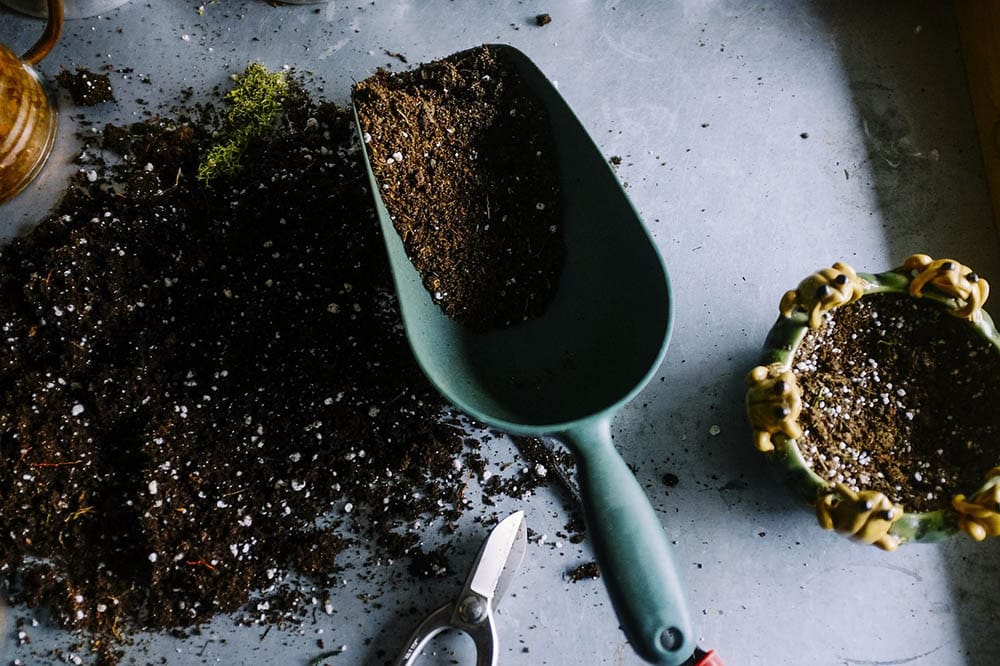
The last type of garden travel blade is plastic. It uses high-impact polystyrene for added durability and is extremely lightweight and affordable, making it one of the most popular choices. However, it doesn’t tend to be as sharp as the other types, so it’s not as easy to use for digging. It can also bend and crack while you are using it.
- Lightweight
- Affordable
- Dull
- Lack of durability
The Trowel Handle
Manufacturers make trowel handles from various materials, including wood, plastic, and metal. These materials aren’t as important as the blade material, as long as they don’t throw off the balance of the tool. What is important is the shape and comfort of the handle. Ergonomic-padded handles are comfortable to hold so you can work longer. A T-shape at the end of the handle will enable you to use two hands so you can dig through difficult rocky soil. We also recommend a brightly colored handle instead of plain wood, as it’s easier to find if you set the trowel down in the garden.
- Clean your trowel after every use, removing all dirt from the blade and handle.
- Store your trowel in a dry area away from the elements, even if it’s rust-resistant.
- If your trowel came with a carrying case, keep it there when you store it.
Conclusion
You can use several types of trowels in the garden, but most people will likely find that potting and transplanting trowels are the most useful ones. The potting trowel enables you to move large amounts of dirt, which is helpful when potting and transplanting. The narrow transplanting trowel is good for transplanting, getting rid of weeds, and digging holes. The other kinds are also useful and can usually get the job done. When making your next purchase, choose a towel that’s comfortable to hold and lightweight so you can manipulate it easily without getting tired.
Featured Image Credit: Pexels, Pixabay
Contents

